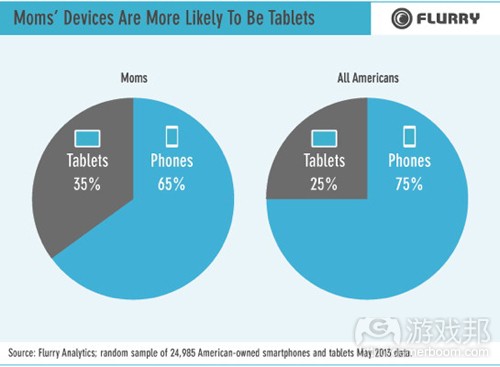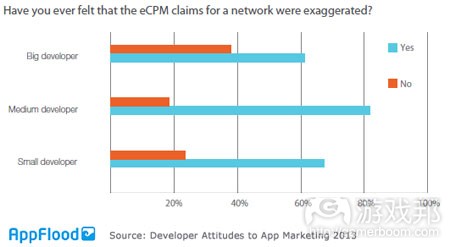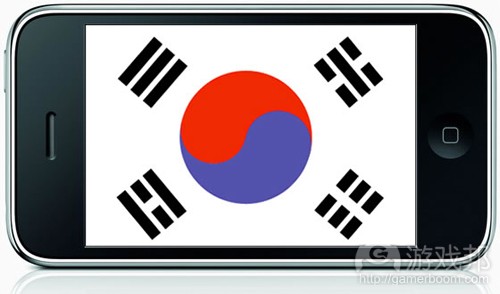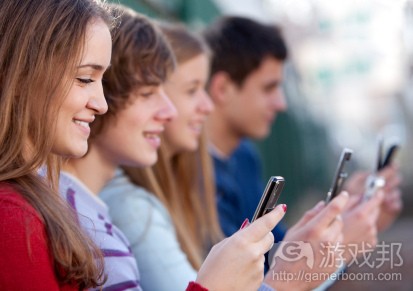每日观察:关注美国妈妈用户的应用使用情况(7.3)
1)Flurry最近发布数据显示了2013年2万4985台美国iPhone、iPad和Android移动设备上的应用使用情况。
数据显示,妈妈用户在Android和iPad上玩游戏的时间最长,分别占比53%和48%,而在iPhone上玩游戏的时间占比不足三分之一。不过iPhone上的生活应用使用率远超过Android和iPad设备。
这些妈妈用户在Android和iPhone上使用最频繁的第二大应用类型是社交网络,但在iPad上则是杂志类应用。
美国妈妈在iPhone、iPad和Android平台的教育类应用投入时间超过其他用户群体,除此之外,购物应用也是她们青睐的应用类型。
25%美国人使用平板电脑的频率高于其他设备,在这一平板电脑用户群体中,妈妈用户占比35%。这有可能是因为家长更喜欢同子女在平板电脑上分享故事和游戏,也有可能是因为妈妈用户就是喜欢更大的屏幕。
2)据pocketgamer报道,手机游戏公司木瓜移动旗下交叉推广平台AppFlood最近调查结果显示,小型开发商所分配的广告预算低于5000美元,但中型和大型开发商在此方面也并非无度挥霍,都有一定范围的预算(游戏邦注:其调查样本是1022家开发商,其中大型公司的标准是拥有超过51人的团队,小型公司则不足15人,中型公司规模则介于两者之间)。
在所有群体中,超过40%的广告营销经费低于5000美元。
超过50%的小型开发商认为自己获取的用户“太昂贵”,60%的中型开发商认为其用户获取价格“正合适”,而大型开发商对此态度较为平衡。
但大部分开发商(71%)认为广告网络故意夸大其eCPM,以诱使开发商注册其服务。有名开发商指出,为了争取客户,多数广告平台声称自己的网络能够提供较高eCPM,但仅在首个月兑现这一承诺。
3)据venturebeat报道,最近有项韩国市场调查结果显示,在4万4168名受访者中,多数用户认为iPhone是最佳智能手机。仅有17%用户对自己的苹果手机有意见,有31%用户对Android系统的三星手机有所不满。用户认为三星手机存在的是电池充电和屏幕质量问题,而苹果的问题则是触屏和按钮故障。
尽管苹果是韩国最为领先的国外智能手机品牌,但它在韩国市场份额已经从2010年的20%以上降至2013年的个位数,而三星在此时期的国内市场份额则增长至65%,另外两家韩国手机制造商Pantech和LG所占份额也分别增长至15%左右。
4)移动广告公司Velti最近报告显示,iPhone和iPad设备在2013年广告份额增长明显,分别从原先的20.4%增长至27.5%,以及原来的13.4%增长至17.1%。iPhone在此期间的广告份额达7.9%,三星Galaxy S III(发布于2012年5月,首月发货量为3000万台)在所有广告印象中占比仅2.3%。
尽管游戏是应用市场中的重要类型,但游戏在Velti平台的广告印象同比上年下降了15%,而娱乐应用及书籍应用则分别增长7%,照片应用也增长4%。
5)MobilePhoneChecker.co.uk最近调查发现,三分之一的英国人会对那些持有他们自认为很“丑陋”手机的人反感。有趣的是,女性用户认为男士最帅气的装备是黑莓手机,因为这样会让他们显得“自信而成功”(游戏邦注:其调查样本是1900英国单身男女)。
男性用户则多认为持有iPhone的女人很性感,因为这会让她们看起来很时尚。
女性最希望男性持有的五大手机设备:
1.BlackBerry Z系列(36%)
2.苹果iPhone (31%)
3.Sony Xperia系列(29%)
4. 黑莓Bold系列(25%)
5.三星Galaxy S系列(21%)
男性最希望女性持有的五大手机设备:
1.苹果iPhone(43%)
2.三星Galaxy S系列(39%)
3.诺基亚Lumia系列(35%)
4.黑莓Z系列(23%)
5.黑莓Bold系列(21%)
虽然HTC无缘进入以上两个榜单前五名,但也有4%男性和6%女性认为该智能手机品牌具有吸引力,而喜欢诺基亚Lumia的用户认为持有这一设备的人看起来很谦逊。(本文为游戏邦/gamerboom.com编译,拒绝任何不保留版权的转载,如需转载请联系:游戏邦)
1)Over half of mothers are mobile gamers
by Phil Tottman
Now you know what your old dear is really doing with her phone.
Flurry Analytics has released data gathered from iPhone, iPad and Android app usage during May of 2013 for 24,985 American-owned devices.
According to the survey, mums spend a lot of time playing games on Android and iPad to reach 53 per cent and 48 per cent respectively, while the iPhone percentage drops to less than third of their time. However, iPhone leads significantly in terms of lifestyle app consumption when compared to Android and iPad.
The second most popular apps used on Android and iPhone amongst mums is social networking, no surprises there (most likely checking up on the hubby) but on iPad its newsstand that takes second place, displaying its strength as a screen for displaying magazines.
American mums spend an overall time on education apps across the iPhone, iPad and Android platforms compared to the rest of the population, which is comforting that in-between gaming they are keeping up-to-date with their little ones’ schoolwork.
Finally, shopping also equates for a large amount of time spent on a device, which is pretty obvious. Which mum doesn’t love a good shop?
25 per cent of the American population use tablets over other devices, of that percentage, 35 per cent are mums. This could be because in general parents enjoy sharing stories and games on
larger screens with their children, or it could be because mums like bigger shiner things.(source:mobile-ent)
2)Chart of the Week: 71% of developers think ad networks exaggerate their eCPMs rates
by Jon Jordan
User acquisition and generating revenue through mobile advertising remain key business levers from all mobile developers.
And while best practises are slowly emerging, there’s still plenty of confusion, both in terms of how to run campaigns, and which of the many options to employ.
Papaya Mobile is keen to know how developers are dealing with this situation; not least because it offers AppFlood, a non-incentivised cross-promotion platform for iOS and Android games.
Industry views
This isn’t to say its survey – Developer Attitudes to App Marketing 2013 – is a sales pitch for its own product, however.
Instead, it’s the combined wisdom from 1,022 developers, broken down in large (more than 51 staff), small (less than 15), and medium companies (the inbetweens).
In terms of allocated budgets, unsurprisingly, the smaller developers are spending sub-$5,000 amounts, but medium and large companies aren’t emptying their wallets either.
Across all groups, over 40 percent of campaigns are sub-$5,000.
This might be reflected in the perceived effectiveness of these campaigns.
Over 50 percent of small developers though the users they acquired were “too expensive”, while 60 percent of medium developers thought users were priced ‘just right’.
Larger developers were the least extreme in their attitudes.
As for generating cash from running in-game adverts, the majority of developers – 71 percent – thought advertising networks exaggerated their eCPMs to get them to sign up.
“To get customers, most of the ad networks use a dishonest way of promising high eCPMs and delivering it – but only in the first month,” commented one developers.(source:pocketgamer)
3)Apple’s iPhone has better quality than Samsung’s Galaxy, Korean consumers say
John Koetsier
According to a consumer survey of 44,168 people, iPhone is the best smartphone. While that result’s likely to be a controversial among Android users, it’s probably not surprising to iPhone fans.
Except that the survey was in Korea, the homeland of bitter Apple rival Samsung.
iPhones have few failures, Korean respondents said, with only 17 percent having any issue with their Apple smartphone, while 31 percent reported issues with Android-based Samsung phones.
Samsung phones reportedly had significant battery charging problems and screen quality issues, while Apple’s troubles were related to touch or button malfunctions.
Apple is the dominant foreign smartphone manufacturer in Korea, but that’s not saying much.
Foreign manufacturers have had a difficult time penetrating Korea, with Motorola, HTC, Nokia, and Blackberry all seeing just sub-one-percent market share in the country.
While Apple has historically done better, with better than 20 percent market share in 2010, that has dropped to single digits in 2013. Samsung, by contrast, has jumped to 65 percent domestic market share, with Pantech and LG, two other Korean manufacturers, each growing to about 15 percent.
That doesn’t leave much for American invaders like Apple.
Even so, it’s clear from the survey that those Koreans who choose iPhone, like iPhone. And that Apple’s legendary build quality and attention to detail is still evident.
But with the flood of cheaper Android phones from multiple companies including Samsung, it’s equally clear that Ferraris don’t win market share wars. And that Apple’s much-rumored
cheaper iPhone, which analysts have said could triple market share in at least one Asian country — China — is needed sooner rather than later if Apple wants to regain lost ground.
And while the cheaper iPhone will likely have a plastic shell that is cheaper to build than iPhone 5′s metal one, building shoddy products is just not in Apple’s religion, CEO Tim Cook said back in February.
Which should mean that with a cheaper device still built to Apple’s demanding specifications, the company has a shot at doubling or tripling market share in Korea as well as other Asian and emerging markets.(source:venturebeat)
4)Report: global Android ad share numbers ‘continue to shrink’
John Koetsier
I’m not accustomed to seeing the words “Android continues to shrink” in a report.
A week after iPad browsing share hit a five-month high with 82.4 percent share, according to mobile ad firm Chitika, another mobile company says that global Android mobile adshare dropped from 41 percent in May 2012 to 36 percent in May 2013.
Velti‘s “state of mobile advertising” report, released just this morning, says that iPhone and iPad significantly increased their ad share in 2013, moving from 20.4 percent to 27.5 percent and 13.4 percent to 17.1 percent, respectively. Apple’s new iPhone 5, introduced in this time span, accounted for 7.9 percent of total ads shown, while Samsung’s Galaxy S III, which launched in May 2012 and shipped 30 million units in its first five months, accounted for only 2.3 percent of all impressions.
Velti says that Apple should prepare for some shrinkage, however, as consumers slow iPhone purchases in hopes of a new model – perhaps Apple’s rumored cheaper iPhone.
It’s easy to read too much into adshare and browseshare numbers that come out on a monthly basis.
They don’t provide great insight into device markets in terms of numbers sold. But Velti says the numbers “provide a highly accurate picture of the market,” at least in terms of how those devices are being used. That’s simply due to the fact that the big networks provide ads for tens of thousands or even hundreds of thousands of apps on hundreds of millions of devices, providing a massive sample size from which full-market data on platforms, people, and usage can be fairly accurately inferred.
And the continuing — and in this case growing — delta between iPhone and Android suggests that there are real differences here in what consumers do and how they use their Android and iOS smartphones. A caveat would be that Velti, though global, is weighted toward those in North America and Western Europe.
In other words, a study with only Asian and India users would likely find quite different results.
One thing that seems clear based on the numbers is that in the U.S., Verizon is grabbing market share from AT&T. Verizon has jumped over 10 percent to a 34 percent share at the expense of AT&T, which is now down to sub-50 percent share. That’s significant, as mobile data is an important and growing revenue stream for carriers — and as it is largely smartphone-driven.
And one other thing of note.
While games are hugely important in app marketplaces, often taking up half the number of apps available on a platform and making up half the downloads, that dominance may be shifting. Game impressions dropped 15 percent year-over-year, Velti said, while entertainment apps and books jumped 7 percent each, and photo apps were up 4 percent.
The number of gaming apps continues to increase, Velti says, but they’re facing increasing competition from media and photography apps for consumer time.(source:venturebeat)
5)A third of people are turned off by admirers with ugly phones
by Zen Terrelonge
Man: Hello beautiful, I’d like to take you out. May I have your number? Woman: Oh wow, sure! Wait, is that a HTC?
Worryingly, price comparison site MobilePhoneChecker.co.uk has found that a third of Brits would be turned off by someone with a phone they considered ugly.
Interestingly, women believe BlackBerry devices are the ‘most attractive’ phone for men to own, considering users ‘confident and successful’, which may shock those with an iPhone or Samsung stuffed in their pockets.
Comparatively, the survey of 1,900 single UK-based men and women found that men find the iPhone the sexiest device for women to own because it makes them seem ‘stylish’.
The top five devices women favour for men rank as follows:
1. BlackBerry Z Series – 36 per cent
2. Apple iPhone (any model) - 31 per cent
3. Sony Xperia Series – 29 per cent
4. BlackBerry Bold Series – 25 per cent
5. Samsung Galaxy S Series – 21 per cent
The top five devices men favour for women rank as follows:
1. Apple iPhone (any model) – 43 per cent
2. Samsung Galaxy S Series – 39 per cent
3. Nokia Lumia Series – 35 per cent
4. BlackBerry Z Series – 23 per cent
5. Blackberry Bold Series – 21 per cent
While HTC didn’t make the top five for either sex, four per cent of men and six per cent of women find the smartphone brand attractive, and those that favour Nokia Lumia users consider owners to be modest.
Adam Cable, Director of MobilePhoneChecker.co.uk, said: “Singletons with HTCs might need to watch out- it appears they may work against you when trying to attract a partner. If you’re having trouble, maybe borrow a mate’s iPhone or BlackBerry. That way, you can be confident that you ooze success and style without your phone letting you down.”(source:mobile-ent)















































 闽公网安备35020302001549号
闽公网安备35020302001549号